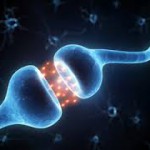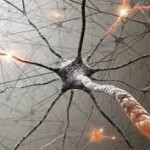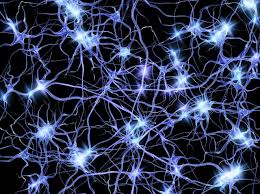My recovery is going well. The pain is nearly gone, so all I have to do right now, besides a fair bit of physio, is get off the damn painkillers.
The post-op pain was bad for about two weeks, so, given the tolerance I’d already built up before the surgery, my dose of oxycodone was about 100 mg per day, spiced up with a side of morphine while I was still in the hospital. There wasn’t much follow-up care. Okay, I got a call from the ward doctor about a week after the operation to make sure I wasn’t paralyzed from the neck down, and I’ll see the surgeon for a check-up in another month. The health-care system here is a bit spotty when it comes to individualized care. My family doc couldn’t even remember what was wrong with me, five days after I left the hospital. It was a herniated disk, right? Um, no, wrong. It was a stenosis, which means extra bone growth impinging on the spinal cord, and the solution was to take out the trash and then fuse three verterbrae. A pretty hefty operation. So, not having a clue as to the specifics, he simply asked how much pain medication (oxycodone) I needed and gave it to me.
But now comes the delicate matter of getting off the oxys — delicate because I lived (and came close to dying a few times) for these very drugs (or their cousins) a mere 33 years ago. So where am I at now? Should I have shaken my head, with a manly chuckle, and Just Said No? A lot of ex-addicts find this decision more agonizing than the pain. Check out some of the comments to my last two posts. They ask themselves: Is the pain relief worth the chance of going back to that terrible place?
 Last week my post highlighted the glories of self-programming — both as a principle and as a concrete solution to an existential problem. I still think it’s a big part of the answer. But, as some of you cautioned me, the dividers in a pillbox are not exactly bullet proof. So I sometimes found myself taking a couple of Thursday’s supply on Wednesday, and compensating by borrowing from Saturday to Friday, and so forth. Why? Because I still like the feeling. Because the line between pain relief and the soothing calmness provided by opiates is impossible (at least for me) to pinpoint. In fact it’s not a line at all. It’s a space, a zone. And my self-control is good…but it’s not perfect.
Last week my post highlighted the glories of self-programming — both as a principle and as a concrete solution to an existential problem. I still think it’s a big part of the answer. But, as some of you cautioned me, the dividers in a pillbox are not exactly bullet proof. So I sometimes found myself taking a couple of Thursday’s supply on Wednesday, and compensating by borrowing from Saturday to Friday, and so forth. Why? Because I still like the feeling. Because the line between pain relief and the soothing calmness provided by opiates is impossible (at least for me) to pinpoint. In fact it’s not a line at all. It’s a space, a zone. And my self-control is good…but it’s not perfect.
So I took self-programming a step further. My agreement with my doctor about a weekly reduction (20 mg per week — about the fastest you can go and still avoid withdrawal symptoms) was already signed and sealed. (And by the way, that plan came from me, not him.) But for the day-to-day, I handed my neatly organized pillbox to Isabel and said, please give me the daily amount, as indicated, and put the rest away somewhere. I cleverly set up a system in which I have no control, and I did it as the ultimate expression of self-control.
Suggestion: if you don’t have a partner handy, use a friend, or maybe just ask your pharmacist, if it’s someone you know and trust. If you were creative enough to be a successful addict, then this is not going to be so difficult.
But why? Why should this attraction, this conflict, come back and haunt me now — so many years later? The answer, of course, is to be found in the brain. When I teach about addiction, whether to my university classes or on lecture tours, I repeatedly pound in the critical fact that physical addiction and psychological addiction are two different animals. And yet psychological addiction is obviously physical, in the sense that it stems from  changes in bodily structures — namely, synapses — the connections between neurons. Synapses in the amygdala, the striatum (nucleus accumbens), and the cortex blossom in new places or just get stronger — more easily passing electrochemical energy from one set of neurons to another — as we become increasingly drawn to a drug (e.g., oxycodone, crack, booze), an activity (e.g., gambling, football, playing the guitar), or a person. So what happens to synapses that are left “unused” for 20 or 30 years? There are two answers to that question.
changes in bodily structures — namely, synapses — the connections between neurons. Synapses in the amygdala, the striatum (nucleus accumbens), and the cortex blossom in new places or just get stronger — more easily passing electrochemical energy from one set of neurons to another — as we become increasingly drawn to a drug (e.g., oxycodone, crack, booze), an activity (e.g., gambling, football, playing the guitar), or a person. So what happens to synapses that are left “unused” for 20 or 30 years? There are two answers to that question.
1. They are not left unused. You know those dreams you wake up from in a sweat, all those years after giving up smack or Andrea or whatever/whoever it was? Or the images in your mind when you read that article about the scourge of methamphetamine use in Kansas? You just gave those synapses a very thorough workout. And that’s what helps them grow stronger.
OR
2. Just as with PTSD, there are synapses that “contain information” that is just too emotionally loaded to ever disappear completely. Strong emotion builds strong synapses. By sending floods of dopamine, norepinephrine and other neuromodulators to brain regions at the crossroads of emotion and imagery, the initial experience (especially when repeated) provides a sort of super-fertilizer for synapse growth. Like the patch of weeds that sprang out of that spot where you accidentally spilled fertilizer last season, those synapses may be essentially indestructible.
There are other variants to these answers. But you get the general idea. Development is not a two-way street. You can’t ever go in reverse. Which is why “recovery” is not about deleting addictive impulses or images. It’s about saying “No.” And saying it often enough. And then building new synaptic pathways from that point onward — and maybe  connecting those up to other pathways that went dormant for a while — pathways that are also supercharged by emotions, but, in this case, emotions about nurturing yourself and others, loving and forgiving yourself (and others), and keeping yourself out of harm’s way. That’s how you change the meaning of the addictive impulse, you change its context, you change the value that getting some has for you. But as with other developmental landmarks, you can’t just erase it.
connecting those up to other pathways that went dormant for a while — pathways that are also supercharged by emotions, but, in this case, emotions about nurturing yourself and others, loving and forgiving yourself (and others), and keeping yourself out of harm’s way. That’s how you change the meaning of the addictive impulse, you change its context, you change the value that getting some has for you. But as with other developmental landmarks, you can’t just erase it.

Leave a Reply to Carolyn Kay Cancel reply